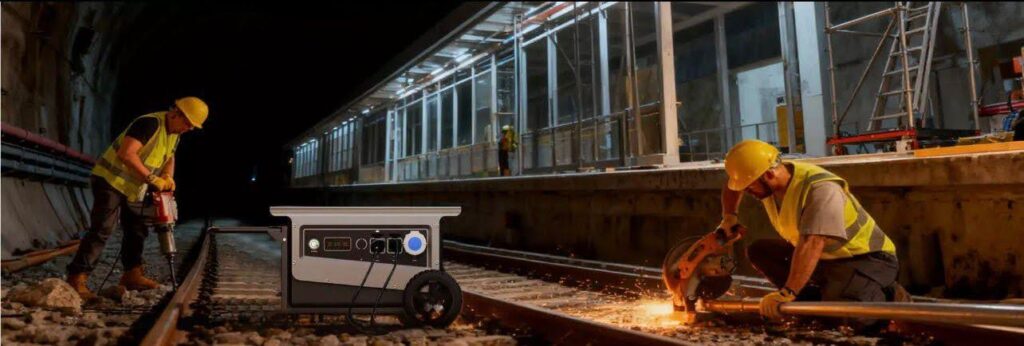How Can Industrial Power Station Choose Compliant and Economical Emission Reduction Paths?

The worldwide trend of green power and a decrease in environmental pollution has put great pressure on the industrial power plants. They needed to strike a balance between the rules and regulations aimed at ensuring that the emissions are not excessive in addition to ensuring that they remain efficient and cost-effective in their operations. The decision on the appropriate emission reduction pathway cannot be just a matter of complying with requirements: it can be a matter of sustainability and economic stability in the long run.
This article examines the methods of power stations to determine the most advantageous approach to assessing, choosing, and executing the paths of emission reduction in compliance, but at low cost, in terms of technology, operations, and financial aspects.
Knowing the Regulatory Landscape.
It is imperative to know the regulatory environment in which a power plant operates before its ultimate definition is a reduction strategy. The regulations of emissions vary by location and tend to be dynamic, according to the scientific developments and the changes in the policies.
Global and Local Standards
Important guidelines like the Paris Agreement, the EU Industrial Emissions Directive (IED), the U.S. EPA Clean Air Act established very general international standards in terms of emission limits. On the local level, numerous nations have come up with their own Nationally Determined Contributions (NDCs) defining allowable amounts of pollutants such as SO2, NO[?], CO2 and particulate matter (PM).
Compliance as a Moving Target.
There is no single time of compliance but it is an ongoing process. The regulators are increasing the standards as time goes by and this is forcing the power stations to use flexible systems capable of satisfying the upcoming thresholds. Plants must therefore consider the technologies not only in line with the current standards but have to be able to scale them up with more stringent regulations in the future.
Assessment of the Sources and Types of Emissions.
The only way to start emission reduction is to diagnose. The different types of power plants that are powered by industries produce a combination of pollutants, which is determined by the source of fuel, process of combustion, and the type of technology (coal-fired, gas, biomass, or hybrid).
Major Emission Categories
Carbon Dioxide (CO2): It is the biggest contributor to global warming and it is mainly caused by the burning of fossil energy.
Nitrogen Oxides (NO[2]): Born in the process of burning under the influence of a high temperature, which leads to smog and acid rain.
Sulfur Dioxide (SO2): It is an acid-forming gas that is formed out of fuel containing sulfur.
Particulate Matter (PM): Health and machinery damaging fine particles.
Carrying out an Emission Audit.
A complete emission inventory can be used to determine the dominant pollutants. Operators with the help of Continuous Emission Monitoring Systems (CEMS) are able to follow real-time data to focus on those investments in reducing technologies whose compliance impact is maximum per dollar.
Some of the technological avenues that can be employed to reduce emission.
The current emission control technologies provide a number of alternatives, each with specific cost, performance, and complying consequences.
Carbon Capture, Storage and utilization (CCUS).
CCUS takes in CO2 prior to its entry into the atmosphere. Although capital heavy, it has high long-term returns especially in carbon controlled markets. The captured CO2 can be recycled in the industrial processes or underground storage, and a waste stream is converted to a possible source of revenue.
Flue Gas Desulfurization (FGD) Systems.
FGD systems take SO2 by wet or dry scrubbing. Wet scrubbers are also more expensive but remover efficiency is 95 percent and therefore it is suitable in plants with a severe limit on sulphur emissions. Dry scrubbers on the other hand have less operating costs when it comes to moderate compliance requirements.
Selective Catalytic and Non-Catalytic Reduction (SCR/SNCR)
These systems aim at removing the emissions of NO[?] and transforming it into nitrogen and water, which are harmless. SCR is very efficient but expensive in capital costs and SNCR is a cheaper and easier approach to low-capability plants with less strict NO[?] limits.
Electrostatic Precipitators and Textile Filters.
Electrostatic precipitators (ESPs) and baghouse filters are the technologies that will be effective in the case of particulate control. ESPs provide low operation cost to large-scale operation whereas fabric filter is more efficient when dealing with fine particulates but comes with high maintenance measures.
Hybrid and Renewable Solutions Integration.
One of the current trends in the industrial power stations is the integration of the renewable energy sources to counter the emission as opposed to the application of end-of-pipe solutions.
Fuel Switching and Co-Firing
Switching to natural gas or co-firing with biomass will greatly limit the CO2 and SO2 emissions. This will necessitate burner modifications and fuel logistics changes, but will yield instant emission reductions without undergoing complete system upgrades.
Renewable onsite Integration.
A mix of conventional generation of power and solar, wind, or waste-heat recovery systems permits plants to generate auxiliary electricity in a clean manner. The hybrid models minimize the working pressure in the fossil fuel units, which result in decreased emissions and fuel expenses in the long run.
Based on Data Decisions and Online Optimization.
Digitalization has turned the management of emissions in a firm into a strategic asset.
AI Optimization and Predictive Analytics.
Real-time models of the impact of operational changes on emissions can be designed using advanced analytics. The AI systems are efficient in reducing the combustion, identifying anomalies, and proposing cost-efficient changes in the process, which minimize emissions before they happen.
Intelligent Monitoring and Reporting Systems.
Automated monitoring makes the compliance documentation transparent and audit-ready. This not only will please regulators but also foster investor and community trust which are important to long-term operational legitimacy.
Economic Factors: The Cost versus Compliance.
The decisions that will be most cost-effective will be based on the analysis of the costs and benefits of technology, maintenance, and possible fines due to non-compliance.
Lifecycle Cost Analysis
Instead of looking at the initial expense alone, plants ought to look at total ownership expenses in the lifetime of the system, including installation, maintenance, energy consumption and downtime. As an illustration, a low-cost per ton of pollutant removed may be a high-efficiency scrubber that is less expensive than less efficient subsidiaries in a ten-year time frame.
Taking the advantages of Financial Incentives.
International agencies and governments are known to offer subsidies, tax credits or benefits in the form of carbon trading on emission reduction projects. The involvement in such programs can cover the costs of capital expenditure in a significant way and enhance the viability of projects.
Carbon Pricing and Emissions Trading.
In the areas where carbon pricing systems are established, the minimization of emissions can generate tradable credits, which will make the environmental compliance not only profitable. Forward-looking power plants take into consideration such market opportunities in their budgets.
Harmony Planning and Stakeholder Co-operation.
The compliance is not accomplished alone, it involves collaboration at technical, managerial, and policy level.
Cross-Departmental Collaboration
The combination of environmental engineers, financial analysts, and operations teams makes sure that the emission strategies are feasible and reasonable.
Supplier and Technology Partnerships.
Partnerships with technology vendors and research laboratories enable plants to test new solutions, minimizing risk and ensuring access to the newest technologies on favorable conditions.
Community and Policy Engagement.
The social license to operate can be increased through transparency and active communication with local communities and regulators, which will minimize the chances of expensive conflict or operations ban.
Conclusion.
The most successful power stations do not see the reduction of emissions as something that should be required by the authorities but see it as a strategic change. Through the use of the combination of high technologies, digital intelligence and financial planning, the industrial plants can map a way that is both legal and cost effective.
Finally, the flexibility is the key point, as it is necessary to implement the solutions that could be changed according to the tightening regulations, changing energy markets, and developing science. These people who adopt such a flexible mindset will not only be able to satisfy the current requirements but also will be assured of their competitiveness in the cleaner greener power systems of tomorrow.


 How Often Should You Book a Tankless Water Heater Service in Georgetown?
How Often Should You Book a Tankless Water Heater Service in Georgetown?  Create a Tailor-Made Atmosphere: Designing Walls That Reflect Who You Are
Create a Tailor-Made Atmosphere: Designing Walls That Reflect Who You Are  www.rapidhomedirect.com: Your One-Stop Solution for Home Needs
www.rapidhomedirect.com: Your One-Stop Solution for Home Needs